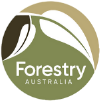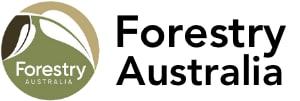
MEDIA RELEASE
Monday 16 October 2023
2023 ANZIF Conference
The best and brightest forest scientists, managers, and growers from across the Asia-Pacific converged on Australia’s Gold Coast yesterday for the 2023 ANZIF Conference.
A record 475 delegates joined the premier event for sustainable forestry management, hosted by Forestry Australia and the New Zealand Institute of Forestry from October 15-18 at the Tweed Heads Twin Towns Conference Centre.
More than 130 speakers including forest scientists, agroforesters, and traditional owners will address the conference, under the theme: Embracing Our Natural Capital: The Science, Technology and Art of managing Forests For All Values.
Forestry Australia President Dr Michelle Freeman said the conference would highlight the need for evidence-based active and adaptive management of all forests, and innovation, technology, skills and knowledge, including traditional knowledge, to support resilient and healthy forests.
“Many Australians might not realise it, but sustainable forest management is an integral solution to many of the challenges facing society – how we can minimise bushfires, combat climate change, support biodiversity and meet local demand for wood, including for housing, just to name a few,” Dr Freeman said.
“These are the topics that some of the greatest minds from Australia, New Zealand and the Pacific Islands will be discussing at this year’s conference.
“It’s so important to these discussions that we all have facts based on the best available science and evidence, and that’s what we’re all committed to through sustainable forest management.”
Among the Keynote Speakers at this year’s conference are nationally recognised identities, Dr Neil Byron and Dr Elizabeth Heagney, who spoke yesterday.
Dr Byron tackled the hot-button issue of forestry in a rapidly changing world, saying: “Almost everywhere in the world, including in Australia and New Zealand, society is changing rapidly but not linearly: disruptive technologies; ageing populations; accelerating urbanisation; the accelerating trend towards a service economy rather than meeting basic human needs for food and fibre. Above all, trying to work out what global climate change means for forests and other natural capital, and how best to respond to extreme flood, drought and fire events.”
While Dr Heagney presented data from 130 livestock businesses in NSW, Victoria, Tasmania and Western Australia, the largest dataset of its kind in the world, saying: “Our analyses indicate that farms with high levels of natural capital are more profitable than their peers. We identified different ‘benefit pathways’ through which natural capital, including trees and forested areas, can support farm businesses – including via improving productivity, and/or by reducing input costs.”
Forestry Australia also awarded nine new Fellows at the Conference.
ENDS
The full program is available here:
Dr Byron’s and Dr Heagney’s abstracts and biography are available here: https://www.forestryconference.com.au/speakers/
ABOUT FORESTRY AUSTRALIA
Forestry Australia is an independent professional association of more than 1,200 forest scientists, managers and growers who work in native forests, plantations and provision of environmental services. Its members are committed to the principles of sustainable forest management and applying these principles to generate environmental, social and economic outcomes in all types of forests and land tenures.
ABOUT DR MICHELLE FREEMAN MFor, BSc, PhD, GAICD
Michelle has a double degree in Science (Ecology) and Forestry, and a PhD from the University of Melbourne. Her PhD was in partnership with CSIRO Darwin looking at savanna fire and tree dynamics of northern Australia, as part of the Tiwi Carbon Study. She has worked in timber harvesting operations, forest management planning and regulation in Victoria and New South Wales and is currently a forest and land management consultant.
For further information:
Danielle McKay
0438 390 273

